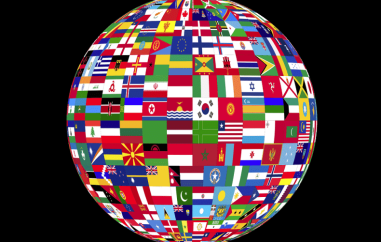We see what we want to see
Â
Â
We all live in world of information overload. Our visual and auditory senses are constantly bombarded with an abundance of data that needs to be parsed! Often times our brain processes information way too quickly with too little data. So given a colossal amount of noisy and chaotic information, how does one make up his/her mind? A global team of scientists along with Dr. Quiroga as the lead author, from the Center for Systems Neuroscience at the University of Leicester, has tried to answer this question using a very unique visual experiment.Â
However, the scientists were faced with a lot of technical difficulties in carrying out the experiment. To measure the brain response to a visual cue one has to implant electrodes into the brain. Now normal volunteers for this experiment certainly will not like holes
drilled in their heads. Therefore the scientists reached an impasse! Interestingly as Dr. Quiroga pointed out, the only recourse for epilepsy patients who do not respond to drugs, was implanting electrodes deep into the brain. As Dr. Quiroga said, "This gives us the opportunity to study how neurons in the human brain respond in different tasks, to different type of stimuli, etc."
What visual cues were the patients given to mimic information overload? These patients were seated on the bed, facing a laptop computer on which the images of Hollywood celebrities were presented. To replicate the ambiguous nature of information that we receive, the scientists decided to present morphed images of two celebrity faces at any given time. The experiment then was to check whether the subject could first recognize the celebrity but more importantly, which celebrity they identified?
To make matters a bit more challenging, the scientists tried to bias the subject's opinion by first showing one of the celebrity faces, used for morphing purposes. This was called the adaptor. It was followed by the presentation of the morphed images themselves. For instance, if the two celebrities were Whoopi Goldberg and Bob Marley and the adaptor was Whoopi Goldberg, whom would the subjects recognize?
Surprisingly, the researchers discovered that if the subject recognized one celebrity more than the other, the neurons fired more when shown a picture of that celebrity. The same thing held true when shown a morphed image between two celebrities. Therefore a neuron that originally fired to the picture of Whoopi Goldberg also fired in recognition to a morphed image of Goldberg and Bob Marley, leading to the subject recognizing the picture as that of Goldberg. Why is that the case? Dr. Quiroga explained, "That means, the neuron in the brain, fired according to what the subject believed he/she was seeing rather than to the visual features of the presented stimulus." Therefore, the researchers concluded that irrespective of the visual features of the stimulus, the subjects saw what they liked to see. As a result, the neurons fired according to a conscious recognition of the images as opposed to the actual images seen.
The scientists report that the current exciting study could pave the way for future research into formation and recall of episodic memories. Dr. Quiroga believes that this is a hypothesis so far and it needs to be addressed in the future, along with an explanation as to how it happens.
So finally, here's some food for thought- Next time when you recognize a fleeting face in the crowd could it mean that it is a person your brain wants you to see?







 »
»